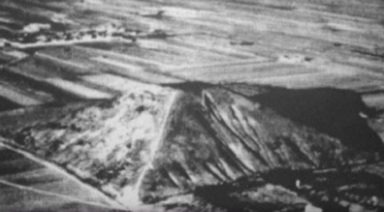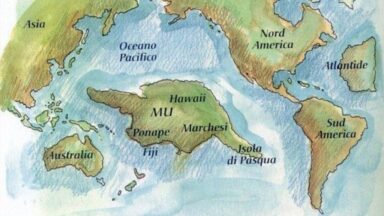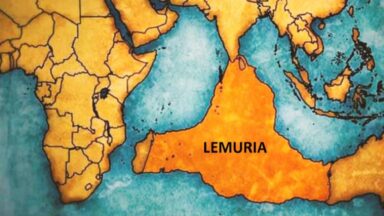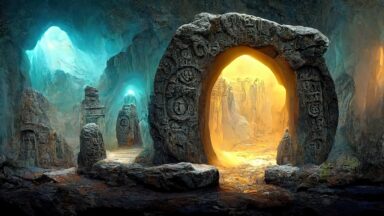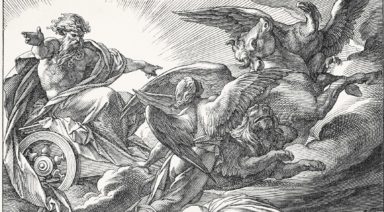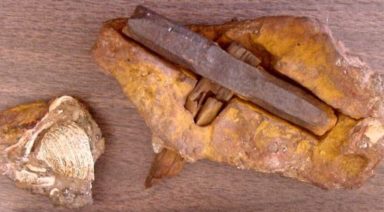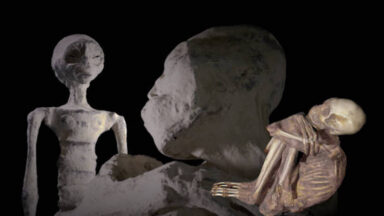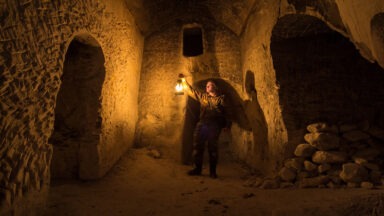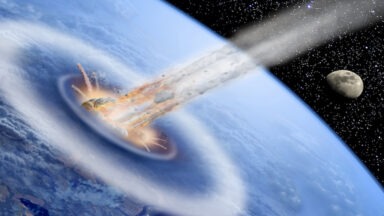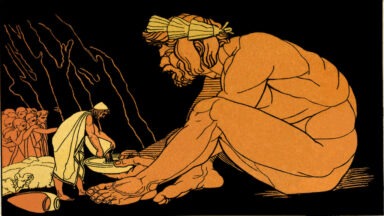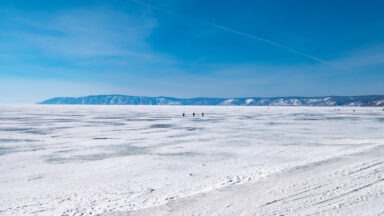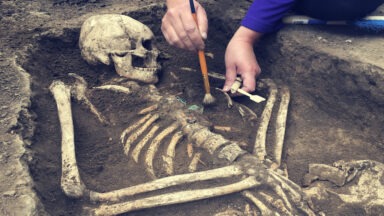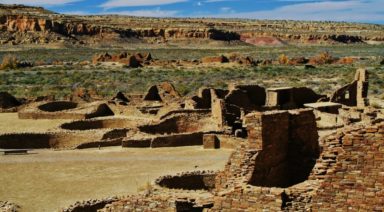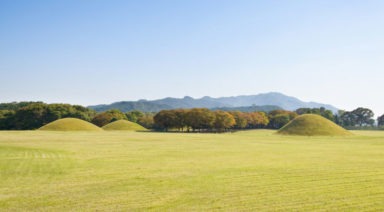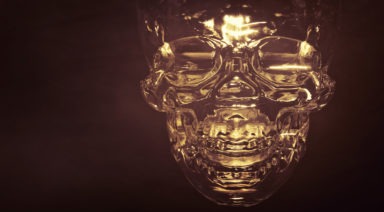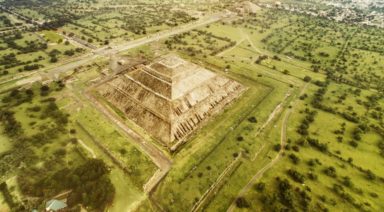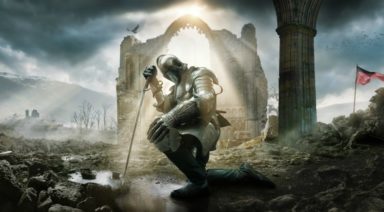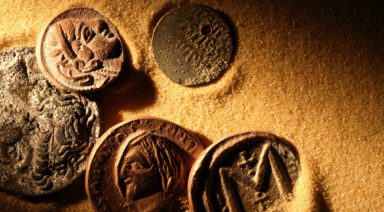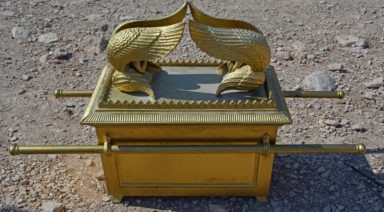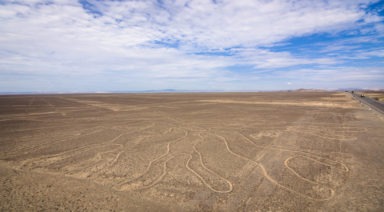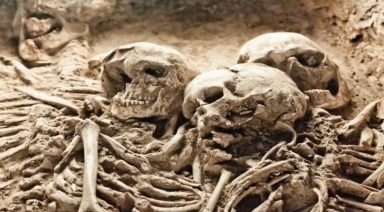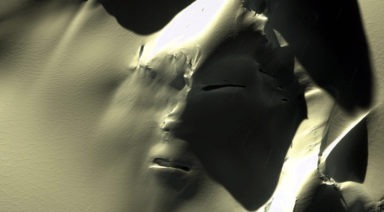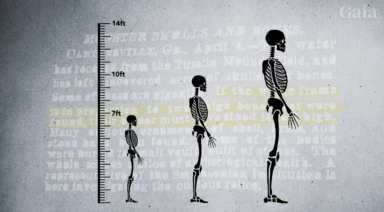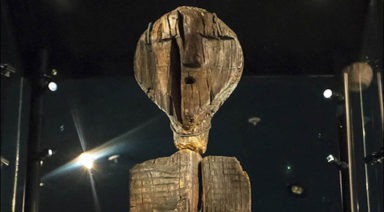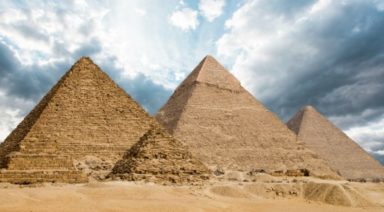The Transformational Power of the Viking’s Runes
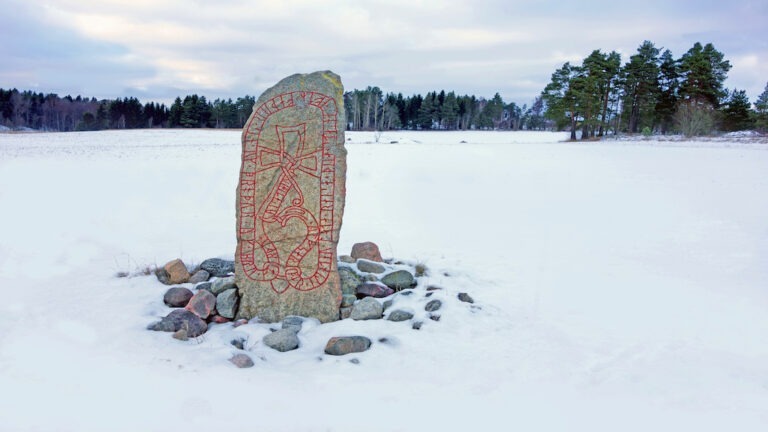
The Birth of Runes
The Viking runes came into being when Odin brought them forth from another world. Historians from the National Museum of Denmark explain that Odin ruled over Asgard, which contains Valhalla, “the hall of the slain.” Half the warriors who died in battle were collected by his female handmaidens, the valkyries, who belonged to him. As such, Odin was the object of worship by kings, warrior chieftains, and their people.
In a mythic Viking tale, Odin wounds himself with his own spear before hanging himself from the Yggdrasil—the world tree in Norse culture—for nine nights, drawing wisdom from the Depths of Urd, just below it. From there, Odin sees the runes that existed even before his own coming into being, “a time before time.”
Just as he’s about to die, Odin gathers up the runes and shares them with all of creation and an array of supernatural entities and human beings. Eventually, the runes were given their shapes and phonetic values by subsequent tribal elders. They were carved on weapons, tools, jewelry, amulets, bones, pieces of wood, memorial stones, church walls, and other hard surfaces.
Ancient peoples of the Germanic lands knew the runes to be beyond the time and space with which most people are familiar. Some experts suggest that they were never really “invented,” but are instead eternal, pre-existent forces that Odin discovered through his aforementioned superhuman ordeal.
Historians have linked the runes to areas with a history of Germanic-speaking peoples, including from Iceland to Scandinavia, throughout England, and into Central Europe. Even Constantinople is home to the runes, showing that ancient seafaring cultures had made their way into what is now modern-day Turkey.
Reading the Runes
We may use the metaphor of a tree to assess how the runes are read. Historian Emma Groeneveld noted that “they are generally made up of vertical lines — one or more — with ‘branches’ or ‘twigs’ jutting out diagonally (and very occasionally horizontally) upwards, downwards or in a curve from them. They can be written both from left to right and from right to left, with asymmetrical characters being flipped depending on the direction of writing.
Each rune represents a phoneme (a speech sound) and had a name, made up of a noun, that started (and in one case, ended) with the sound the rune was mainly associated with. Lots of regional and temporal variation existed in the shapes of the letters.”
Experts of Norse mythology explain that, on the surface, runes seem to be letters. However, they are much more, because each one is a symbol of a cosmological principle or power. The very act of writing a rune called upon unseen spiritual forces. In every Germanic language, wrote historian Daniel McCoy, the word rune comes from the Proto-Germanic word that means both “letter” and “mystery.”
The Eternal Magic of the Runes
The runes have been used to link the natural and supernatural worlds, and this gives them the power to enact spells for protection or success. Still, said Olsen in an exclusive Gaia interview, according to archaeological and historical evidence, runes were used as magical tools for healing, transformation, building wealth, and for making the world a better place.
The power of the runes is in their sound vibrations, teaches Olsen. Each runic character represents a letter so that it can be combined with others to form words. The runes are also magical symbols, and each character has its own name and symbolic meaning.
Norwegian historian Marit Synnøve Vea explained that runes are not limited to their carved signs, but are also applied in certain songs, magical formulas, secret skills, and for secrets hidden in Skaldic (Old Norse) poetry. Vea noted that runic magic was used to foretell the future, as a form of protection, to cast spells, to cure illness, to bestow love, and much more.
But where there is power, there is a warning. In the wrong hands and minds, runes carved by unskilled persons could represent risky business. Vea cites a poem from the Old Norse Egil Saga that serves as an ancient warning for the modern generation:
Runes none should grave ever
Who knows not to read them;
Of dark spell full many
The meaning may miss.
Ten spell-words writ wrongly
On whale-bone were graven:
Whence to leek-tending maiden,
Long sorrow and pain
The history of the runes is the history of timelessness, a paradox among paradoxes. Often regarded as tools for parlor games, serious historians have found the deeper meaning in ways the runes can be read and applied for the betterment of life on this planet and the invisible worlds.
Who Are the Arcturians and How to Contact Them

The Arcturians are highly evolved star beings from the Arcturus star system. Known for their great wisdom and spirituality, they have influenced the spiritual and technological development of humanity. In this article, we explore who the Arcturians are, their history, characteristics, and how it’s possible to contact them.
Table of Contents
- Who Are the Arcturians?
- History and Origins of the Arcturians
- Characteristics of the Arcturians
- Abilities of the Arcturians
- Arcturian Codes: What Are They and How Are They Used?
- The Influence of the Arcturians on Human Development
- Are There Arcturians Incarnated on Earth?
- How to Know If Your Soul Has an Arcturian Origin
- How to Contact the Arcturians
Who Are the Arcturians?
The Arcturians are a highly advanced race that comes from the Arcturus star system, one of the oldest and most evolved systems in our galaxy. Their civilization has reached levels of consciousness and technology far beyond human standards. These extraterrestrial beings are renowned for their deep wisdom and spiritual abilities, which they use to guide and assist other civilizations in their evolution.
The Arcturians often present themselves as beings of light, with an ethereal and luminous appearance. They are masters in the manipulation of energy and vibrational frequencies, enabling them to heal and transform matter and consciousness. Their primary mission is to help raise the vibration of the universe and support the ascension process of other star races and planetary systems.
Gaia’s original series, Deep Space, explores the influence of the Arcturians on the evolution of humanity. According to contactees, these spiritually evolved beings are highly intelligent, efficient, and compassionate, intentionally cultivating their species as logical yet loving beings to help lower vibrational species ascend.
History and Origins of the Arcturians
The history of the Arcturians goes back millions of years to a time when their civilization achieved spiritual enlightenment and mastery of energy technology. Arcturians originated from the Arcturus star system, about 36 to 37 light-years from Earth in the constellation Boötes, and one of the brightest stars in the night sky. It is believed that these beings have existed long before the formation of Earth, dedicating their existence to exploring and assisting other life forms in the cosmos.
Throughout their evolution, the Arcturians have developed a deep understanding of energy and spirituality. They use this wisdom to help other civilizations reach their fullest potential, teaching them to live in harmony with universal laws. Their culture is centered on peace, wisdom, and selfless service, making them ideal guides for developing races.
The influence of the Arcturians on Earth began thousands of years ago, when they made contact with early hominids. Through their guidance, early humans began to develop spiritual abilities and understand the complex energies of the universe. Arcturians’ long-standing evolution on the spiritual plane has shaped their role as guides for developing civilizations, offering insight that comes from beyond material experience. The collaboration between humans and Arcturians has been fundamental to the evolution of human consciousness, leaving an indelible mark on our spiritual and technological development.
It is important to note that while most new age spiritual traditions describe Arcturians as benevolent higher-dimensional guides, the term also appears in science fiction, where “Arcturians” are often imagined as entirely fictional alien species with varying forms and roles across different story universes.
Characteristics of the Arcturians
What Arcturians look like varies across traditions. Some traditions portray them as luminous, non-physical beings composed of light or energy, while others offer more symbolic or humanoid imagery. These variations are often understood as reflections of the observer’s consciousness rather than literal physical traits.
These characteristics have made them guides and protectors of various civilizations in the universe, including Earth. Common Arcturian characteristics include:
- Physical appearance: Arcturians are tall and slender beings with bluish or greenish skin. Their large, almond-shaped eyes reflect their ability to see beyond the physical.
- Ancient wisdom: They have profound knowledge of universal laws and the structure of the cosmos. This wisdom allows them to guide other civilizations in their spiritual and technological evolution.
- Connection with higher dimensions: Arcturians can access higher dimensions of existence. This connection provides them with a broad, multidimensional perspective of the universe and life.
- Galactic protection: They act as guardians and protectors in the cosmos, ensuring that developing civilizations follow a path of peace and harmony. They intervene when necessary to maintain balance and prevent destructive conflicts.
- Purpose-driven culture: Their society centers on peace, harmony, and service to the evolution of other beings.
These defining traits provide the foundation for the advanced abilities the Arcturians are known for.
Abilities of the Arcturians
Arcturians are described across spiritual traditions as possessing highly advanced abilities that reflect their mastery of energy, consciousness, and multidimensional awareness. These abilities are not considered supernatural, but rather expressions of their evolved state of being.
- Telepathy: They possess highly developed telepathic abilities, allowing them to communicate with each other and other species without words. This facilitates deep understanding and direct connection with others’ intentions and thoughts.
- Energy healing: Arcturians have advanced skills in energy healing. They use cosmic energy and vibrational frequency to heal diseases and balance the body and spirit’s energies.
- Manipulation of energy: Arcturians can transform, stabilize, or elevate energetic patterns—from subtle personal fields to planetary grids—using focused intention and advanced vibrational knowledge.
- Spiritual guidance: Their mastery of universal laws enables them to guide other civilizations with clarity, helping developing races align with higher states of consciousness, peace, and purpose.
- Advanced technology: Arcturian technology is highly advanced, surpassing the limitations of current human technology. It includes spaceships capable of traveling through dimensions and devices that manipulate energy with precision. Some people interpret certain UFO sightings as brief expressions of these interdimensional light ships, which are believed to appear only momentarily within physical reality.
Arcturian Codes: What Are They and How Are They Used?
Arcturian Codes are geometric symbols and numerical sequences transmitted by the Arcturians, designed to facilitate healing and spiritual evolution. These codes contain specific vibrational patterns that interact with human DNA and the body’s subtle energies, promoting alignment with higher frequencies and activating latent spiritual abilities.
These codes are used in various spiritual and therapeutic practices. Integrated into meditations, visualizations, and energy healing sessions, Arcturian Codes help release energy blockages, heal traumas, and elevate personal vibration. Practitioners worldwide use these codes to enhance their spiritual growth and connection with higher dimensions.
The application of Arcturian Codes varies depending on individual needs. They can be used to activate the pineal gland, improve connection with the higher self, and access the Akashic Records. Regular use can lead to greater spiritual clarity, an expanded level of consciousness, and a deep sense of peace and alignment with the divine purpose.
The Influence of the Arcturians on Human Development
The Arcturians have had a significant influence on humanity’s spiritual and technological evolution since the earliest days of human existence. This extraterrestrial species has provided crucial knowledge about energy and healing, enabling early humans to develop spiritual abilities and a deeper connection with the universe. Their guidance has been fundamental to humanity’s well-being and ongoing evolution, helping to lay a solid foundation for spiritual growth and energetic balance.
Throughout history, the Arcturians have collaborated with other star races to ensure that Earth follows a path of peace and positive development. Their intervention has been critical during times of crisis, helping humanity overcome challenges and maintain balance during periods of change and transition. This interstellar cooperation ensures that the Arcturian influence remains a stabilizing and evolutionary force for humanity.
Are There Arcturians Incarnated on Earth?
Yes, there are Arcturian beings currently incarnated on Earth. These are souls that have chosen to experience human life in order to fulfill specific missions related to healing, expanding consciousness, and spiritual guidance. These incarnations usually do not consciously remember their origin or homeworld, but they often feel a deep sense of purpose and a natural connection to spiritual matters from an early age.
These Arcturian souls are distinguished by their energetic sensitivity, their innate compassion, and their strong drive to serve others. Their presence acts as an anchor for high frequencies, contributing to the collective awakening of humanity. They often take on roles such as energy healers, spiritual guides, channels, or teachers, using their inner wisdom to support others in their personal processes of transformation.
How to Know If Your Soul Has an Arcturian Origin
Some people feel from an early age that they don’t quite fit into the world and experience a deep nostalgia for a place they cannot identify. If you feel a strong attraction to star-related topics, subtle energies, and spiritual development, it’s possible that your soul has an Arcturian origin. This connection often manifests as an inner calling toward service, healing, or spiritual teaching.
Many people who feel drawn to Arcturus or resonate deeply with the idea of higher-dimensional guidance may identify as Arcturian starseeds—souls believed to have originated in the Arcturus system before incarnating on Earth.
It is also common for those with Arcturian lineage to display intuitive abilities, acute empathy, and a natural capacity to perceive energy fields. You may feel a constant need to raise your personal and collective vibration, as well as a deep desire to live in alignment with universal ethical principles. This inclination does not come from external influences but from an inner wisdom that gradually activates over time.
Below are the most commonly cited signs associated with an Arcturian Starseed or soul origin:
- A familiar connection to Arcturus or star wisdom, often felt as recognition rather than new information.
- A natural sensitivity to energy and vibration, with a strong draw toward healing, light work, or consciousness practices.
- An intuitive sense of purpose, especially roles involving guidance, clarity, or supporting others through personal transformation.
- A calm, observant nature, preferring peaceful environments and gravitating toward inner work and introspection.
- A feeling of being different or “not from here,” combined with a deep inner knowing that your perspective or gifts come from beyond ordinary experience.
How to Contact the Arcturians
Contacting the Arcturians requires a focused approach and spiritual openness. Below is a detailed method to establish a connection with these beings of light through meditation:
- Choose a quiet place: Find a space where you won’t be interrupted. Ensure it is clean and organized.
- Set the mood: Use candles, incense, or soft music to create a relaxing and inviting atmosphere for meditation.
- Sit comfortably: Choose a position that allows you to keep your back straight. You can use a chair or a meditation cushion.
- Breathe deeply: Inhale slowly and deeply through your nose, fill your lungs, and exhale slowly through your mouth. Repeat this several times until you feel completely relaxed.
- Visualize a blue light: Imagine a bright blue light surrounding you completely. This blue light represents the energy of the Arcturians, protecting you and connecting you to them.
- Maintain the visualization: Feel how this blue light penetrates your body, filling you with peace and serenity.
- Ask for assistance: Mentally or aloud, request the presence and guidance of the Arcturians. You can say something like: “Arcturians, beings of light and wisdom, I ask for your guidance and assistance at this moment.”
- Feel their presence: Stay in this invocation, sensing the energy and presence of the Arcturians around you.
- Remain silent: After invoking the Arcturians, remain in silence and be open to receiving messages. Pay attention to any thoughts, images, or sensations that arise.
- Don’t judge: Don’t dismiss any perception, no matter how subtle it may be. Often, the messages are delicate and gentle.
- Close the meditation: When you feel it’s time, thank the Arcturians for their guidance and assistance. You can say something like: “Thank you, Arcturians, for your loving presence and wisdom.”
- Take notes: Write down any messages or experiences in a spiritual journal. This will help you interpret and deepen your understanding of the teachings received.
This meditation method can help you establish a deep connection with the Arcturians, facilitating the reception of their guidance and spiritual wisdom.
Learn More About the Arcturians
Go beyond the basics of Arcturian history, characteristics, and spiritual influence. Gaia’s Deep Space series provides a fuller look at their and other star beings’ presence in cosmic history. Watch Deep Space today to continue your exploration.





